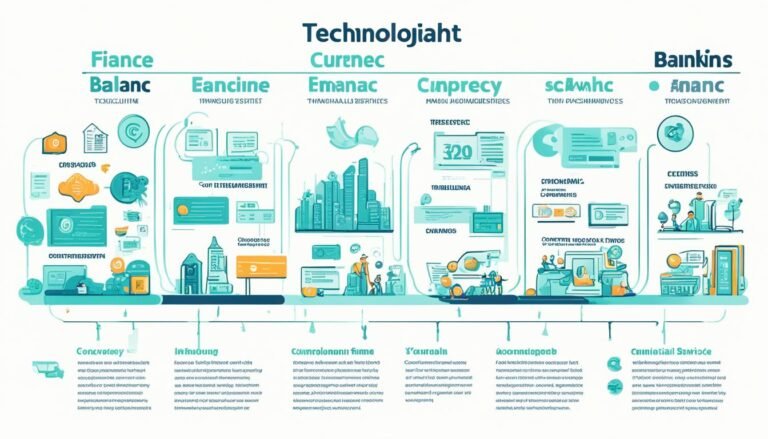Analyzing Market Volatility: Causes and Effects
Market volatility arises from factors like economic indicators, market sentiment, and news. Fluctuations in asset prices, global economic conditions, and inflation rates are primary causes. Effects include shaping investment decisions, requiring strategic approaches, and the necessity for risk mitigation. There are tactics like diversification and hedging to manage volatility. Understanding these elements is essential for managing market variations effectively.
Key Takeaways
- Fluctuations in asset prices and market indices drive volatility.
- Global economic indicators like GDP growth impact market behavior.
- Exchange rates and inflation rates influence volatility levels.
- Market volatility affects investment decisions and risk management.
- Diversification and strategic approaches mitigate volatility effects.
Understanding Market Volatility Dynamics
Market volatility dynamics can be analyzed through the examination of historical price movements and statistical measures of dispersion. By studying volatility patterns, investors can gain insights into the frequency and magnitude of price fluctuations within a given market. Volatility patterns often reveal the level of uncertainty or risk present in an asset or market, influencing investor behavior and trading strategies.
Market trend analysis plays an essential role in understanding volatility dynamics, as trends can impact the frequency and severity of price swings. Identifying and interpreting market trends can help investors anticipate potential changes in volatility levels and adjust their risk management strategies accordingly.
Additionally, analyzing historical data can provide valuable information on how different market conditions have influenced volatility in the past, aiding in the development of more informed investment decisions. Overall, a thorough understanding of volatility patterns and market trend analysis is indispensable for maneuvering the complexities of today's financial markets.
Impact of Macroeconomic Events
Macroeconomic events play a pivotal role in driving market volatility. Economic indicators such as GDP growth, inflation rates, and employment figures can have a substantial influence on investor sentiment and market movements.
Additionally, developments in global trade relationships and geopolitical tensions can have a profound impact on financial markets worldwide.
Economic Indicators Influence
Being influenced by key economic indicators, market volatility often reacts swiftly to shifts in macroeconomic events. Economic cycles and market trends play a significant role in shaping the behavior of financial markets. When significant macroeconomic events occur, several indicators can influence market volatility:
- GDP Growth Rates: Changes in GDP growth rates can signal economic expansion or contraction, impacting market sentiment.
- Unemployment Rates: Higher unemployment rates may lead to lower consumer spending and affect overall market performance.
- Inflation Rates: Fluctuations in inflation rates can impact interest rates and investment decisions, contributing to market volatility.
- Interest Rates: Central bank decisions on interest rates can influence borrowing costs, affecting market liquidity.
- Consumer Confidence Index: Shifts in consumer confidence levels can indicate future spending patterns, impacting market trends.
Global Trade Impact
Global trade dynamics greatly influence the interplay of economic forces, shaping market behaviors and reactions in response to macroeconomic events. Trade agreements play a pivotal role in fostering international commerce and can lead to increased market stability. Conversely, tariff wars, characterized by escalating trade barriers between nations, can trigger market uncertainty and heightened volatility.
The implementation of tariffs can disrupt established supply chains, affecting businesses' bottom lines and consumer prices. Investors closely monitor trade negotiations and agreements to gauge potential market impacts, as trade policies profoundly influence global economic growth prospects.
Understanding the implications of trade agreements and tariff wars is essential for market participants to navigate volatile trading conditions and make informed investment decisions.
Behavioral Finance and Market Fluctuations
Behavioral finance plays a pivotal role in understanding market fluctuations as it explores the psychological factors driving investor decisions.
The impact of investor psychology and the influence of herd mentality are substantial in shaping market trends and volatility.
Investor Psychology Impact
The impact of investor psychology on market fluctuations is a complex interplay between human behavior and financial outcomes. Investor behavior analysis reveals that emotional triggers play a significant role in decision-making processes. Cognitive biases, such as loss aversion and overconfidence, can lead investors to make irrational choices during times of market volatility. Understanding how these biases influence decision-making is important for predicting market movements. Research indicates that investor sentiment often drives market trends, causing prices to deviate from fundamental values. By analyzing historical data and investor behavior patterns, financial experts can gain insights into how psychology impacts market dynamics.
- Emotional triggers influence decision-making.
- Cognitive biases can lead to irrational choices.
- Investor sentiment drives market trends.
- Market prices may deviate from fundamental values.
- Historical data offers insights into psychological impacts.
Herd Mentality Influence
An observable phenomenon in financial markets is the significant impact of herd mentality on market fluctuations, as evidenced by patterns of collective decision-making influencing asset prices. Group behavior and crowd mentality play a pivotal role in shaping market dynamics, often leading to exaggerated price movements based on the actions of the majority rather than rational analysis. The table below illustrates the influence of herd mentality on market behavior:
| Effects of Herd Mentality | |
|---|---|
| 1. Amplified Volatility | 2. Delayed Corrections |
| 3. Increased Speculation | 4. Limited Diversification |
| 5. Heightened Risk | 6. Reduced Market Efficiency |
Understanding and recognizing the impact of herd mentality is essential for investors to make informed decisions and navigate through periods of heightened market volatility.
Role of Market Sentiment and News
Market sentiment and news play a pivotal role in shaping investor decisions and influencing market fluctuations. News impact can trigger significant movements in stock prices, leading to increased volatility. Sentiment analysis tools are used to gauge the overall feeling of market participants towards a particular asset or the market as a whole.
Here are five key points highlighting the importance of market sentiment and news:
- Market Reaction: News such as earnings reports, economic indicators, or geopolitical events can cause rapid market reactions.
- Investor Behavior: Market sentiment influences investor behavior, leading to buying or selling sprees based on emotions rather than fundamentals.
- Volatility Spikes: Sudden shifts in market sentiment can result in spikes in volatility, creating both opportunities and risks for investors.
- Media Influence: News outlets and social media platforms can amplify market sentiment, affecting trading volumes and price movements.
- Algorithmic Trading: Automated systems can analyze news sentiment in real-time, executing trades based on predefined criteria to capitalize on market movements.
Effects of Global Economic Indicators
Amid the interconnected global financial landscape, the impact of various economic indicators from key economies reverberates throughout financial markets worldwide. Exchange rates analysis plays a pivotal role in understanding market reactions to economic indicators. For instance, when a country's inflation rates rise unexpectedly, it can lead to a depreciation of its currency as investors anticipate central banks to intervene by raising interest rates. This, in turn, can affect investment trends as foreign investors may find the country's assets less attractive due to the higher inflation risk.
Inflation rates are significant economic indicators that can influence market volatility. Sudden spikes in inflation rates can lead to uncertainty among investors, causing fluctuations in asset prices and market indices. Understanding how inflation rates impact investment decisions is essential for investors looking to navigate volatile market conditions effectively. By analyzing global economic indicators such as exchange rates and inflation rates, market participants can make informed decisions to manage risks and capitalize on opportunities in an increasingly interconnected financial environment.
Strategies for Managing Volatility
Given the impact of global economic indicators on market volatility, it becomes imperative for investors to employ strategic approaches aimed at managing fluctuations effectively. Risk mitigation and portfolio diversification are key strategies to navigate through volatile market conditions.
Here are five essential strategies for managing volatility:
- Diversification: Spreading investments across various asset classes can help reduce the impact of volatility on a portfolio.
- Hedging: Using financial instruments like options or futures to offset potential losses in a portfolio due to market downturns.
- Cash Reserves: Maintaining cash reserves can provide liquidity to take advantage of investment opportunities during market downturns.
- Asset Allocation: Regularly reviewing and adjusting the mix of assets in a portfolio based on market conditions and investment goals.
- Stress Testing: Conducting stress tests to assess how a portfolio would perform under different market scenarios, helping investors prepare for potential volatility.
Conclusion
In summary, market volatility is a intricate phenomenon influenced by diverse factors such as macroeconomic events, behavioral finance, market sentiment, and global economic indicators. Understanding these dynamics is essential for investors and financial analysts to navigate the uncertainties of the market.
By employing strategies to manage volatility effectively, stakeholders can mitigate risks and capitalize on opportunities. Stay tuned for further insights into the intricate world of market fluctuations and their implications for financial markets.








